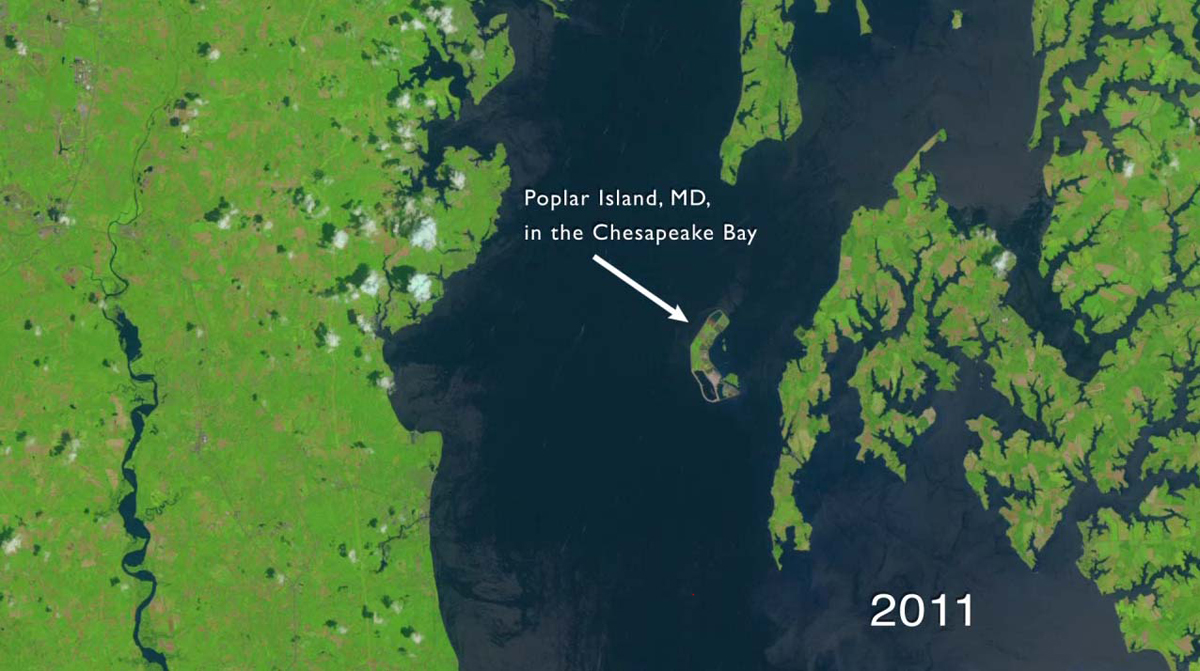Video from Space: Army Builds 'Mud Island' on US East Coast


A new time-lapse video reveals the view from space during an ambitious U.S. Army project to rebuild an eroding island on the U.S. East Coast.
The new NASA video uses satellite views to chronicle more than a decade of work by the Army Corps of Engineers to restore lost portions of Maryland's Poplar Island in Chesapeake Bay about 30 miles (48 kilometers) south of Baltimore Harbor.
In the video, images from the Earth-observing satellite Landsat show the island grow from little more than a speck in the Chesapeake Bay in 1997 back into a full-blown island by 2011.
"In these Landsat images, the dikes that contain the mud and hold it in place begin appearing in 1998," officials with NASA's Goddard Space Flight Center wrote in a video description last week. "This growing island is a wildlife sanctuary, a hatchery for hundreds of diamondback terrapins and home to about 170 different species of birds including terns and bald eagles."
The Goddard space center is located in Greenbelt, Md. Center officials posted the video of Poplar Island from space on June 29, christening it "Mud Island."
Poplar Island was originally a single landmass in Chesapeake Bay until the early 1900s, when erosion split the island into three pieces, according to the Army Corps of Engineers. By 1990, the total area of the largest section was less than 10 acres, the corps explains in a project history.
A 1994 study found that rebuilding the island to restore more than 1,000 acres would be a good use of sea mud dredged up from navigation waterways leading to Baltimore Harbor, Army officials said. The project began in 1998 and will be complete by 2027.
Get the world’s most fascinating discoveries delivered straight to your inbox.
This story was provided by SPACE.com, a sister site to LiveScience. Follow SPACE.com on Twitter @Spacedotcom. We're also on Facebook and Google+.



